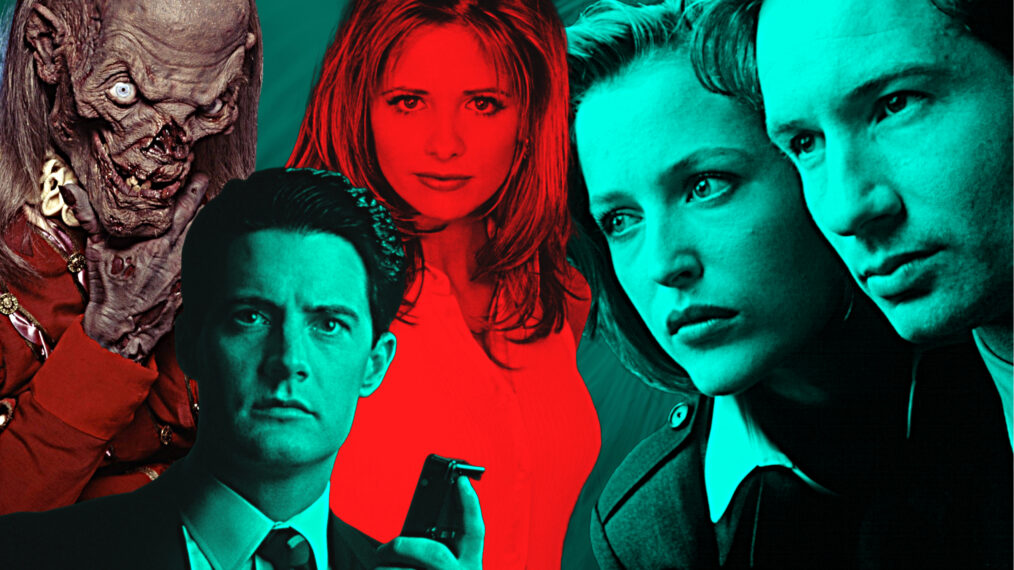Double Double Toil & Trouble: Some of Hollywood’s Best Witches
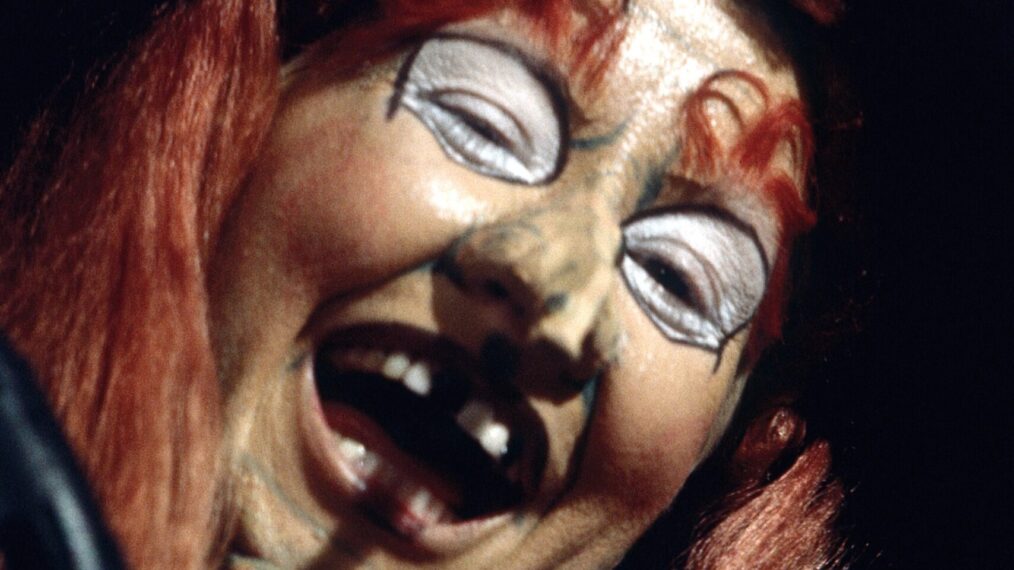
Usually, witches are the antagonists of a film or TV series. But, sometimes, witches are good! With Halloween coming up shortly, we’ve got witches on the brain, so here’s just a short list of the best onscreen witches — both good and bad.
Buffy the Vampire Slayer
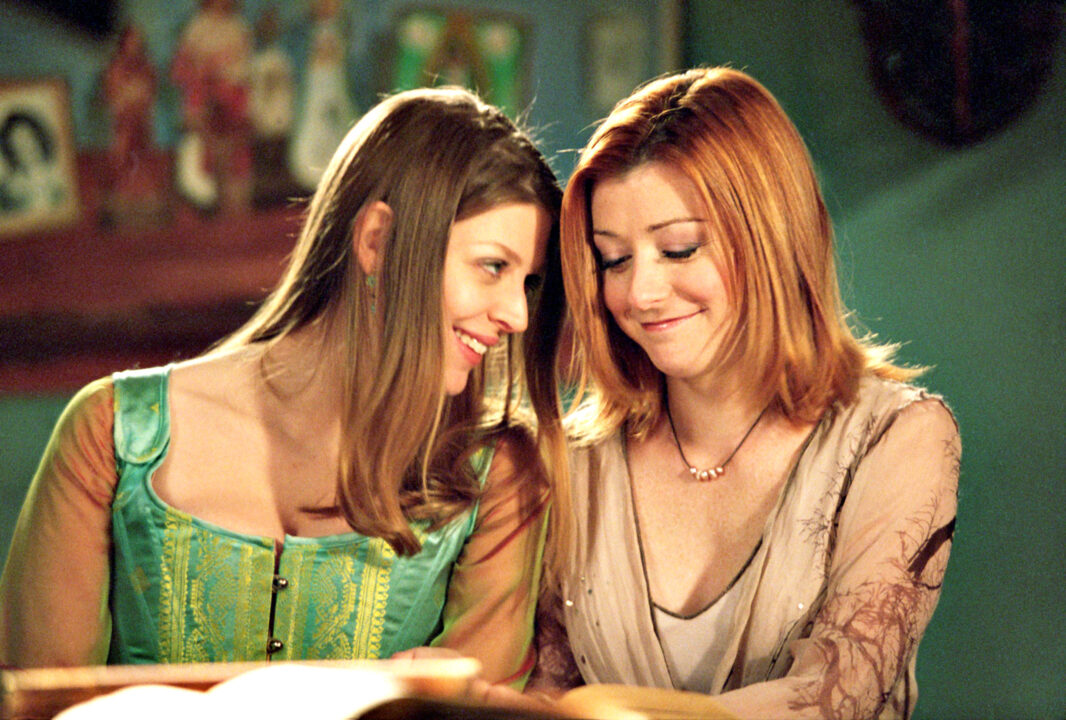
20th Century Fox Film Corp./Courtesy: Everett Collection.
Sure, at face value, it’s a show about vampires and the “chosen one” who must sacrifice cheerleading and prom and a regular life to fight them. But any true fan of this iconic supernatural teen drama series knows that it was much more than that; monsters who show up in Sunnydale are also metaphors for problems or types of people teenagers encounter as they come of age. A group of bullies turns into a pack of mystical hyenas; Willow’s first boyfriend, Oz, cheats on her because he’s a “werewolf” who can’t control his own actions if there’s a full moon. And vampires? They are not just run-of-the-mill stumbling blocks that turn to dust once they’re staked; they’re also mopey, semi-predatory older men (Angel) or mopey, violent punks in leather coats with a lot of anger issues (Spike) who happen to be hot, of course. Even vampire slayers have a soft spot, and Buffy’s was choosing the wrong guy — but that’s also what made her, and the show, so relatable.
Witches, on the other hand, do not fall into the category of metaphorical problems or issues; inversely, witchcraft was often used to solve an episode’s obstacle, because witches in the Buffyverse mostly represent female empowerment. And, because it was the ’90s, they are also used as a veiled symbol for being gay. At least, that’s how Willow (Alyson Hannigan), the series’ main witch and the brains of the group, discovers she likes women — she joins a coven. But even in Sunnydale, power can corrupt, and the things you use to solve problems can become the problem. Later in the show, magic turns into a metaphor for drugs, when Willow, grieving a breakup, gets addicted to the dark side and falls into quite the depression hole. Then, just as Willow has recovered and become healthy again, her girlfriend is accidentally killed, and she goes on a vengeance streak that nearly destroys the entire world before giving up magic. For a while.
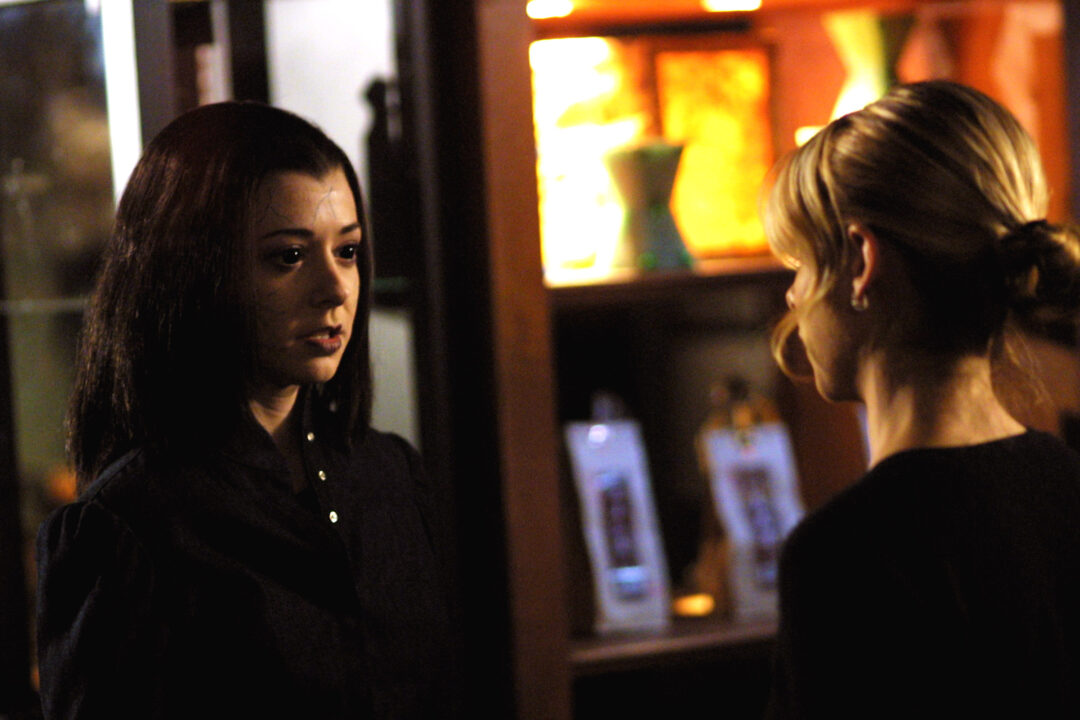
Courtesy of Everett
Unlike most examples of witches onscreen, here, a witch is a self-realized woman who uses her magic for good and doesn’t take herself too seriously. Though she begins as a shy, book-smart nerd with no confidence, by the end, Willow has transformed into a powerful, confident sorceress who saves the world on more than one occasion.
Bedknobs and Broomsticks
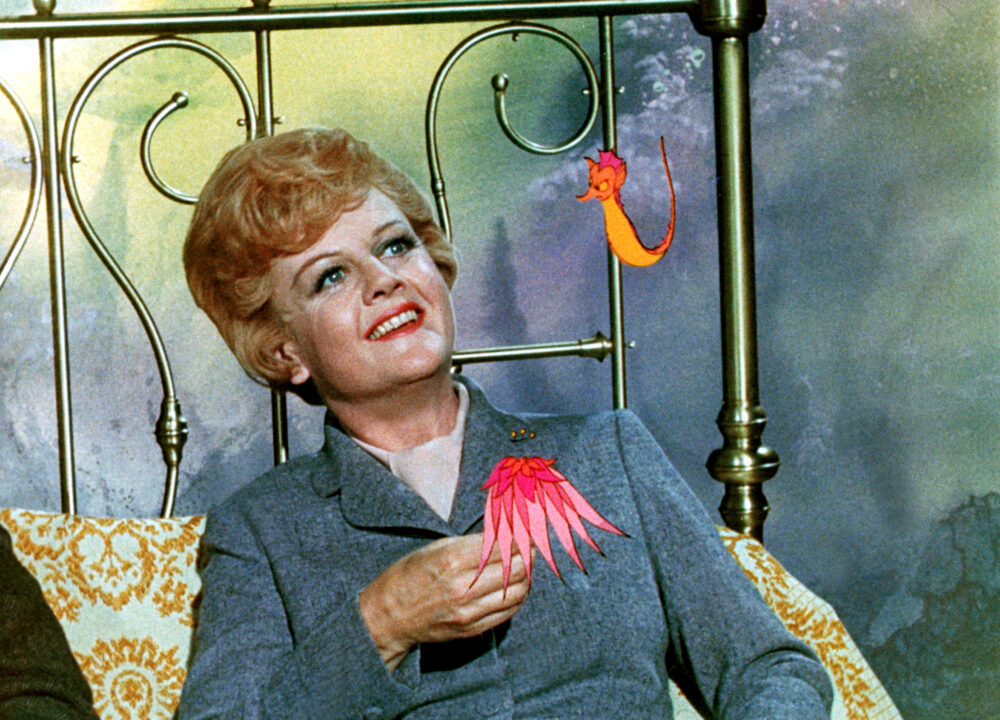
Everett Collection
Another good witch (in-training) is Miss Eglantine Price, who is reluctantly saddled with three young children who have escaped London during the 1940 Blitz. Miss Price is learning witchcraft with aspirations of helping the British war effort against the Nazis, so she may be the most well-intentioned onscreen witch there ever was! After a series of adventures (and many memorable songs), she also comes to love the children in her care. It is probably no coincidence that she is no longer a witch by the end of the movie, when she officially adopts the three children and moves in with a charismatic street magician named Mr. Emelius Browne (David Tomlinson), since prior to the 21st century, witches were nearly always single women. Interestingly, Angela Lansbury, who plays Miss Price, also voiced Mrs. Potts in another movie with a witch, Beauty and the Beast, as well as the Dowager Empress Marie in Anastasia. This 1997 animated film could almost be considered a witch movie as well, since the main antagonist, Rasputin, was based on the real-life Russian mystic and holy man who befriended the last emperor of Russia and who was infamously difficult to kill. Several murder plots against him failed before one was successful. (Perhaps because … he was an actual wizard?)
H.R. Pufnstuf
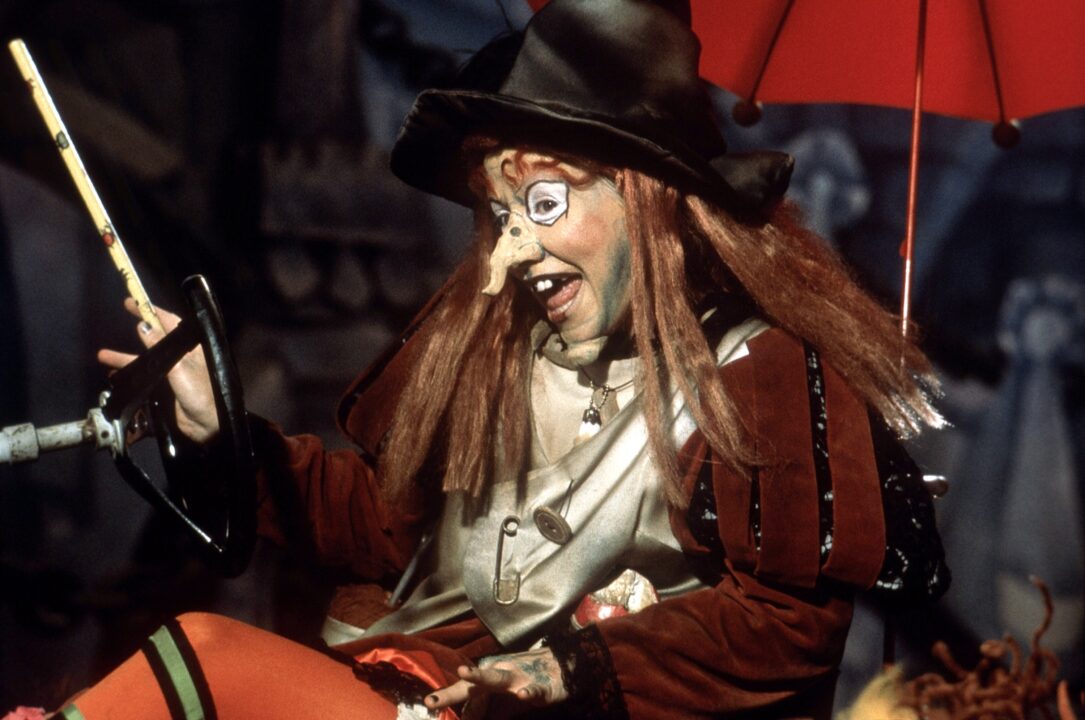
Courtesy Everett Collection
In addition to having the most fun name of all TV witches, Wilhelmina Whack Witchiepoo (portrayed by the late Billie Hayes) was also quite the unlikable villain. The main antagonist on the 1969-70 Sid & Marty Kroft TV series H.R. Pufnstuf (also uniquely named), Witchiepoo’s primary concern in life was stealing a magical flute named Freddy from the protagonist, Jimmy. With minions and powers out the wazoo, Witchiepoo enjoyed torturing all the inhabitants of Living Island, and it was her boat that tricked Jimmy into leaving the real world and arriving in this magical land. After that, she made it her full-time job to keep Jimmy on the island, partially because he was in possession of the flute she so desired. When she wasn’t piloting her Vroom Broom, Witchiepoo often disguised herself in various costumes to trick Jimmy. But Jimmy had childhood innocence and a kindly dragon on his side, so Witchiepoo was never quite successful in her efforts. It was a classic battle of good vs. evil.
The Sword in the Stone
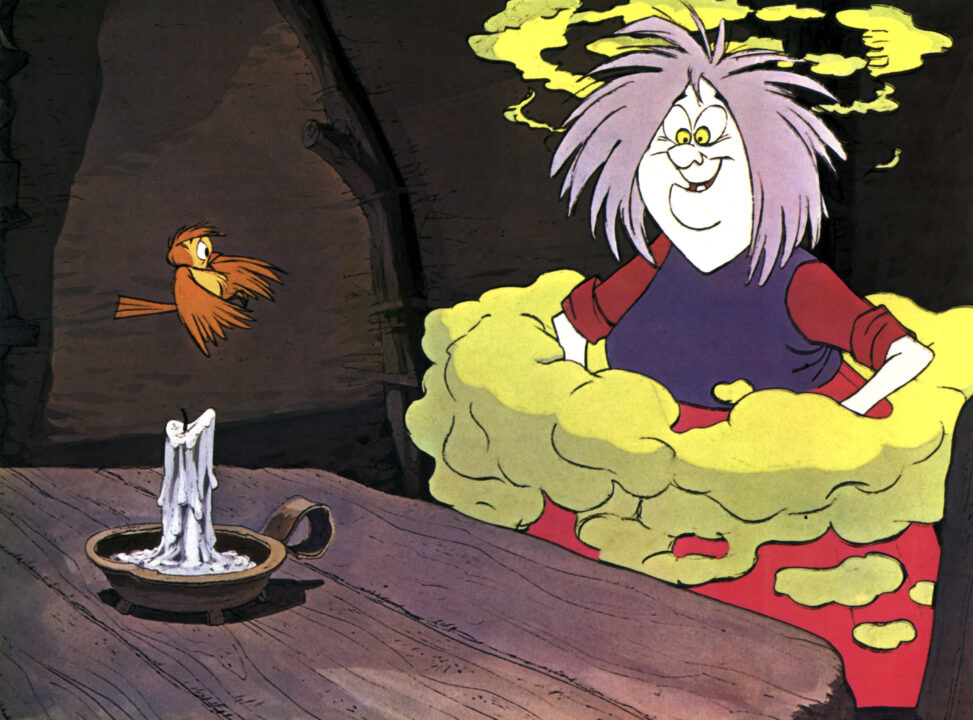
Walt Disney Pictures/Courtesy Everett Collection
Another kids’ classic involving a witch is The Sword in the Stone, which tells the tale of King Arthur’s origins, and features a battle between Madam Mim, the morbid and malevolent shape-shifting witch, and her good-hearted wizard nemesis, Merlin. We don’t know exactly why she hates Merlin, other than competitiveness; because she believes she is a more competent magical being, she challenges Merlin to a wizards’ duel, which she ultimately loses, despite cheating. Like many onscreen witches, she lives alone in the woods and likes to inflict chaos. Her overconfidence is her ultimate downfall, so perhaps she is representing the dangers of hubris. Either way, her purple hair and hatred of sunshine make her one entertaining adversary!
And let’s not forget Guy Ritchie‘s very underrated adaptation, King Arthur: Legend of the Sword. No Madam Min, but Merlin has a sorceress companion named The Mage who does a lot of cool tricks involving animals to the tune of a very cool soundtrack. Also, Charlie Hunnam is in it. Need I say more?
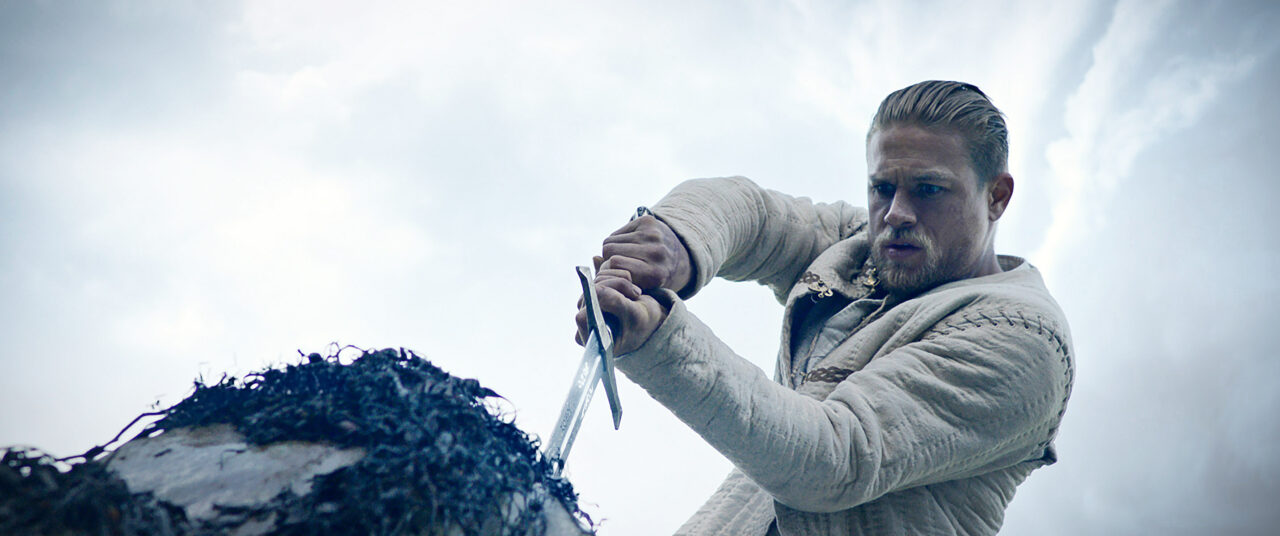
Courtesy Everett Collection
Beauty and the Beast
The witch in Beauty and the Beast only makes a brief appearance, but it is an important one, because she is the one who curses the shallow, spoiled prince into a life of solitude and the appearance of a hideous monster. Like the Evil Queen in Snow White, she too disguises herself as an old lady (because apparently old ladies are basically invisible?) either to gain access to the prince’s castle or merely as a test, which he promptly fails. When the prince not only denies her gift of a beautiful rose, but also scoffs at her appearance, the witch punishes him for being shallow and having no empathy. Did she need to curse his entire staff into becoming household objects? Probably not, but magic isn’t always so easy to contain. Only after the prince is treated as poorly as he treated the witch and Belle’s love helps to transform him into a man and not a petulant little boy in lion-buffalo form is the curse finally broken. A popular theory is that the original book the cartoon is based on was meant as a didactic text on arranged marriages, so it makes sense to have a happy ending. This witch might be the nicest one of all: Because of her, both the prince and Belle find true love!
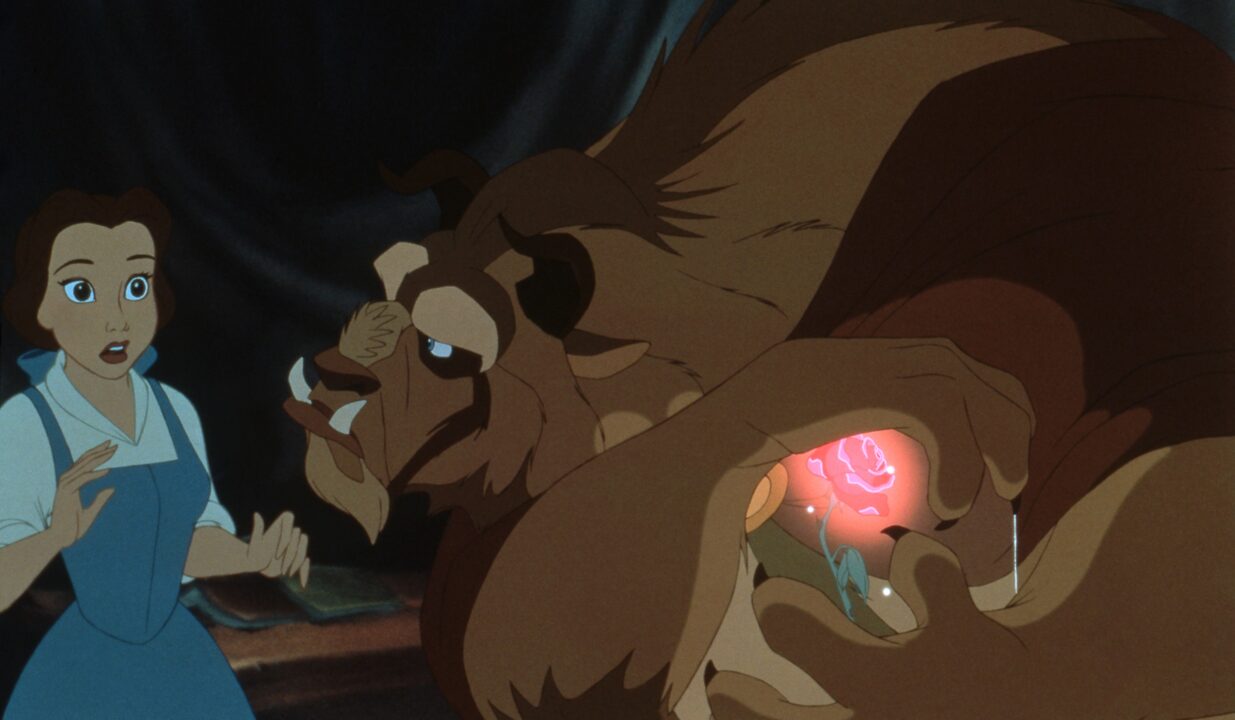
Walt Disney Pictures / Courtesy Everett Collection
For more on witches, check out our list of which Disney witch is the best here.
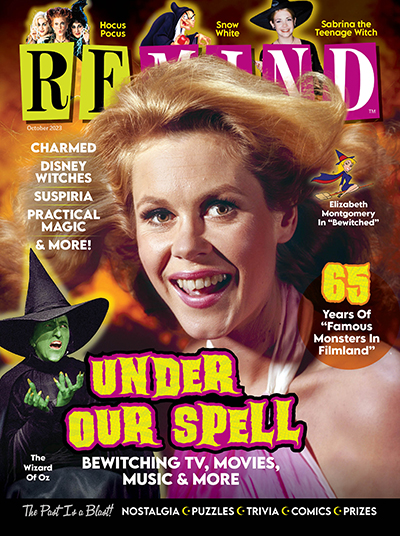
Witches
October 2023
Take a fond look back at our favorite small-screen spellbinders
Buy This Issue
